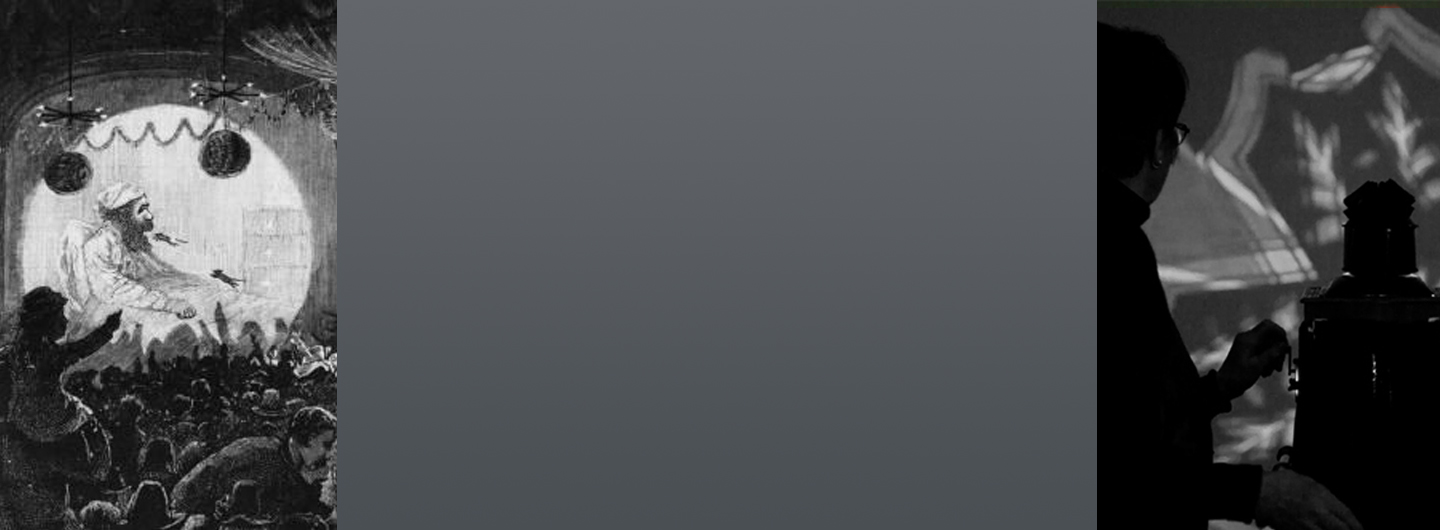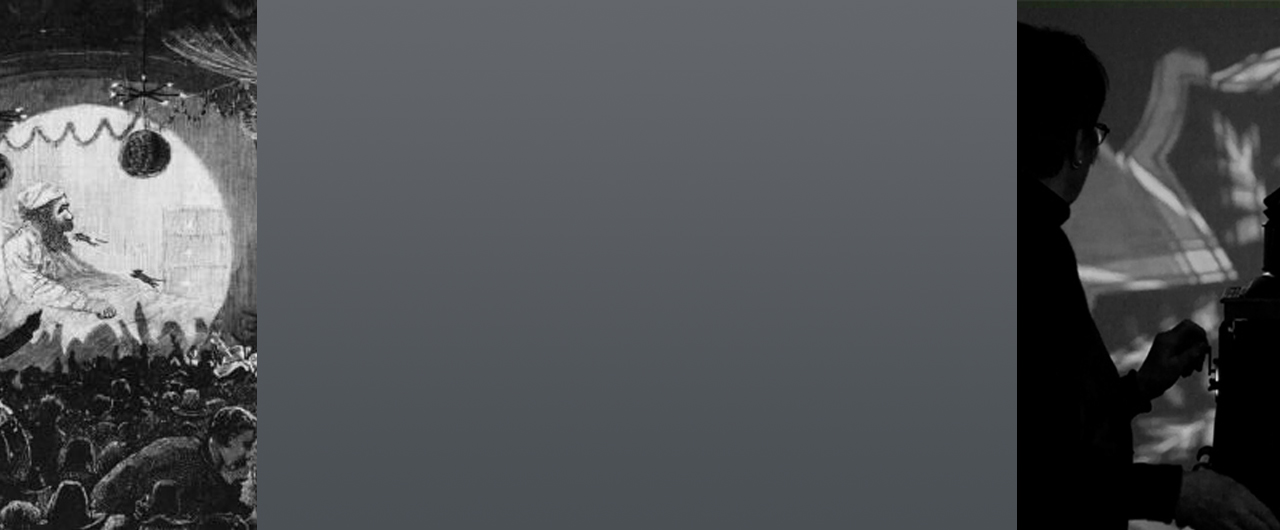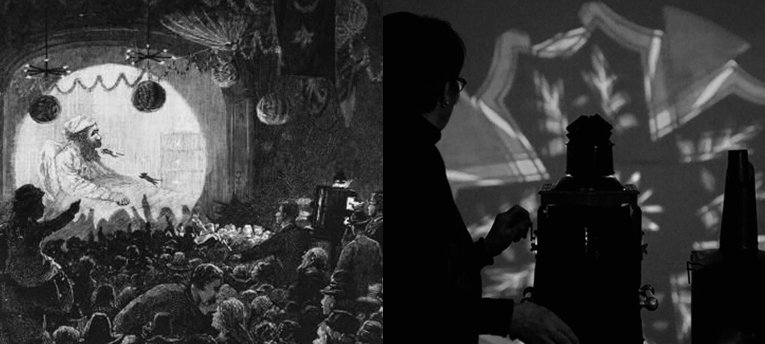





A mechanism takes motion as input and transforms it into a different output motion. The arrangement of its components—gears, pulleys, levers and similar mechanical parts— can be thought of as storing the information required to produce that output.
Before the invention of cinema, magic lantern slides were the principle form of projected entertainment. From the moment the magic lantern was invented, there was a desire to add motion to the painted figures and scenes. Mechanical slides used levers, sliding panels, rackwork gearing, elliptical gears, pulleys, and scrolls to move windmills, ships, animals and other picture elements against static backgrounds. The images were stored in paint, ink or photochemicals, but the motion resided in the mechanism.


A slip slide has multiple glass panels. One is fixed, the others are free to slide back and forth along slots. Two or three frame animations can be produced by clever use of opaque areas to cover and uncover parts of the image. Slides largely consisted of humorous before and after states, often involving pratfalls or other surprises. Others allowed the projectionist to continuously slide one image over another, producing boats and trains moving across a fixed background.


At its simplest, a lever slide allows the projectionist to swivel an image on a movable glass against a fixed background. It could be used to produce effects like a miner swinging a pickaxe or an animal raising and lowering its head to eat. Multiple levers could be combined in more complicated mechanisms to create surprisingly complex motion: everything from dancing figures to writhing snakes.


An image painted on a circular plate of glass could be rotated through 360 degrees using pulleys. Windmill and waterwheel slides were ubiquitous, as were kaleidoscopic chromotropes.


Some of the most sophisticated effects were produced using arrangements of rackwork, pinions, gears and linkages. A slide with a circular rack and a pinion at the end of a crank could rotate an image through 360 degrees, just as a pulley could. Multiple rackworks could rotate images in opposite directions against each other. Gears and linkages could create irregular motions like ships rocking on the sea. Complex mechanisms could be used to illustrate astronomical phenomena—a concentric arrangement of eight circular rackworks was even used to reproduce the solar system, with each planet rotating around the sun independently.